Queen parrotfish are herbivores that graze the reef, using their beaks to scrape plants and algae from the reef surface. This habit involves ingesting corals and sometimes other animals as well, but they are primarily herbivorous.
Through their feeding strategies, parrotfishes help create much of the sand around a reef.
Upon eating calcareous algae (i.e., algae with a hard skeleton), parrotfishes digest the soft parts and pass the hard parts, which essentially take the form of sand. Through their constant grazing, Queen Parrotfish serve an important ecological function on coral reefs. By removing algae, they open up space on hard surfaces for corals to attach and grow. You can see the hard tooth-like jaw on the photo below.
This species reproduces through a behaviour known as broadcast spawning, where females release eggs and males release sperm into the water column above the reef, at the same time. This method increases the likelihood that eggs will become successfully fertilized and that fertilized eggs will not be eaten by egg predators on the reef surface.
Interestingly, all queen parrotfish hatch as females. As they mature, the largest individuals become male. Only during that transition do they lose their drab, brown colour and become the brightly coloured individuals that we think of when imagining this species. Ironically, the “crowns” that give the Queen Parrotfish its common name are only found on males.
Several species of large bony fishes and sharks eat queen parrotfish both as juveniles and adults.
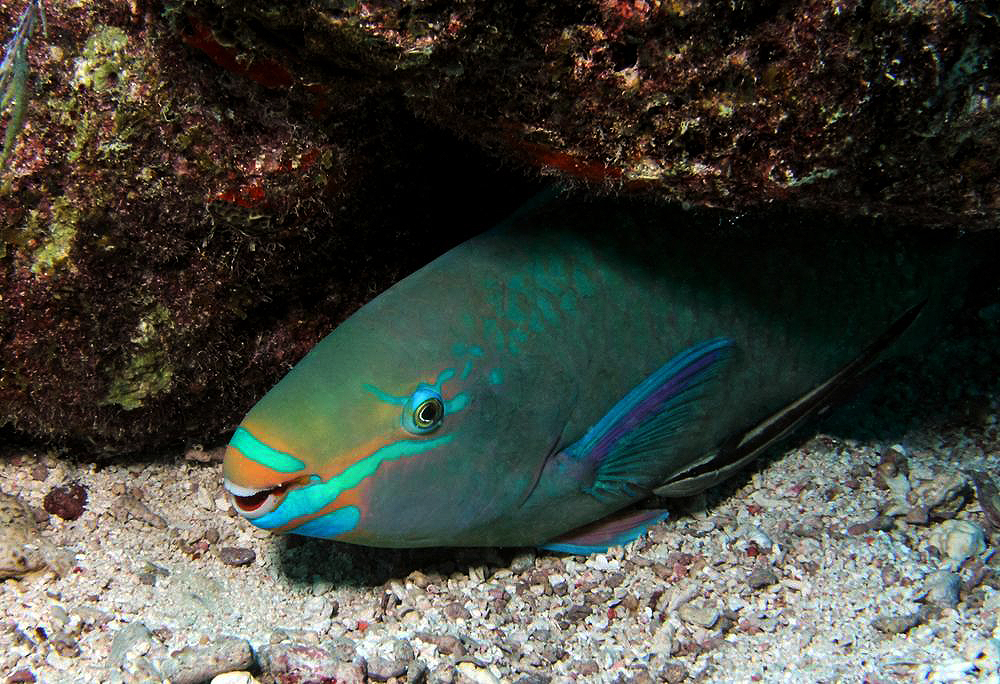
At night, this species is known to find protected places on the reef to sleep. Before sleeping, individuals of this species surround their bodies with a cocoon-like structure of mucus that provides them some protection from predators (via its bad taste and its likelihood of waking up the parrotfish if touched).
I recall taking Yim night diving off the Silk Cayes in Belize and actually being able to pick one up off the ocean floor within it’s membrane and handing it to Yim so she could hold it. I motioned for her to shake it and it woke up and swam away. I watched Yim’s eye get real big under water.
Queen parrotfish are fished by artisanal fishers throughout their range and often fraudulently marketed as grouper. Hopefully, anyone reading this would recognize the difference between a Parrotfish and a Grouper.
As they are herbivorous, these fish typically do not take a baited hook, so fishers generally target them via spearfishing. This method can be almost too effective, and in some areas, the Queen Parrotfish has been mostly depleted. Although I have never speared one of these since I never wanted to, they would be easy prey as you can get quite close to them under the water, as you can see from my photos.
Since all of the largest, most colourful individuals are male, fishing can alter the sex ratio of a population or reduce the size at which the largest females change to male. These changes to population dynamics can affect this species’ ability to successfully and fruitfully reproduce.
Recognizing the important role that Queen Parrotfish and other parrotfishes play in opening up space for new corals, some countries around their range have offered them some legal protection.
Even with the fishing pressure that queen parrotfish experience and their depletion in some areas, scientists believe the species to be of least concern across its entire range.
I will end this post by saying that often at depth, even when I cannot see a Parrotfish, I can hear them crunching away on the reefs.
It is not currently vulnerable to extinction.

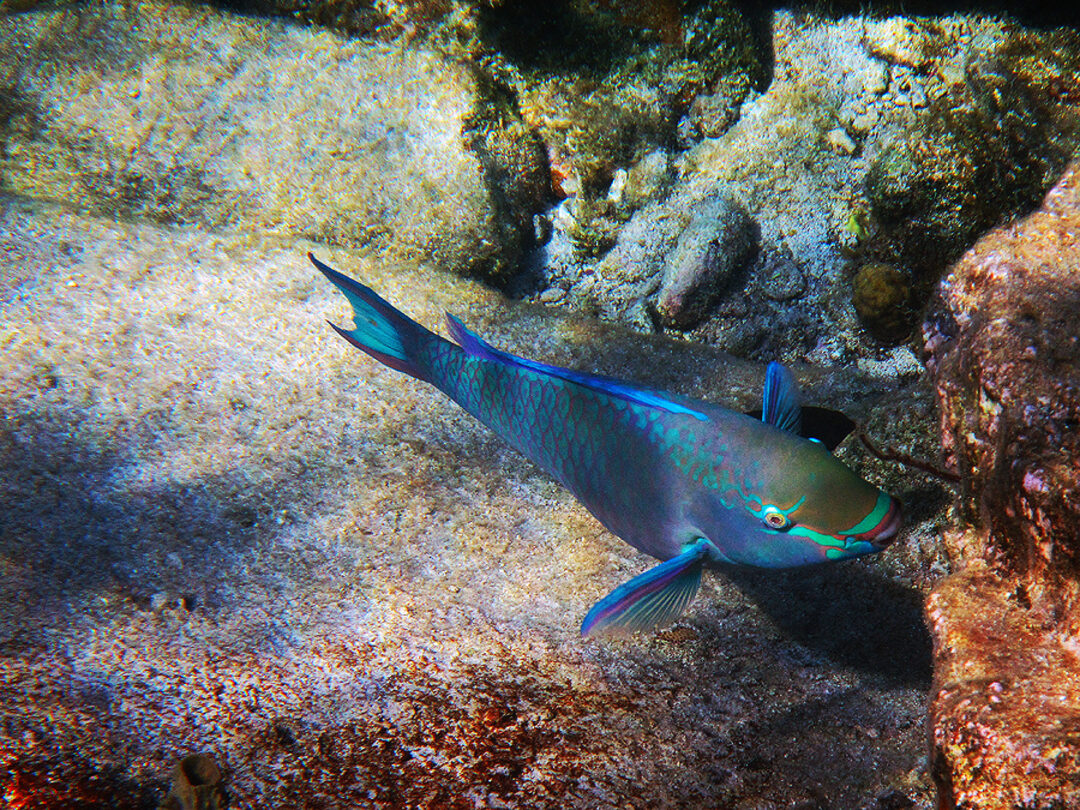
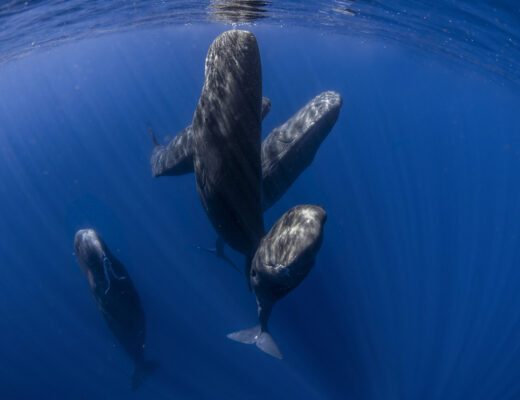
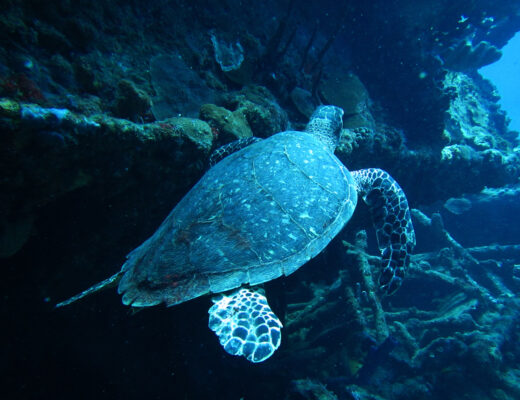
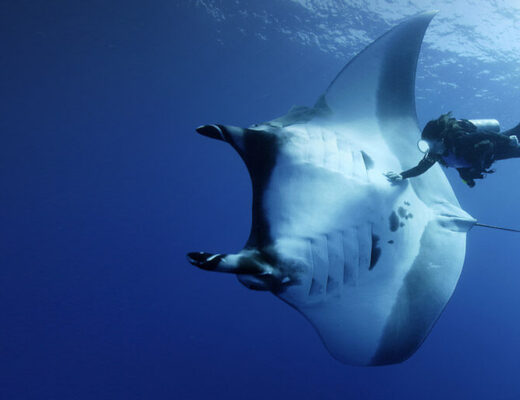
No Comments